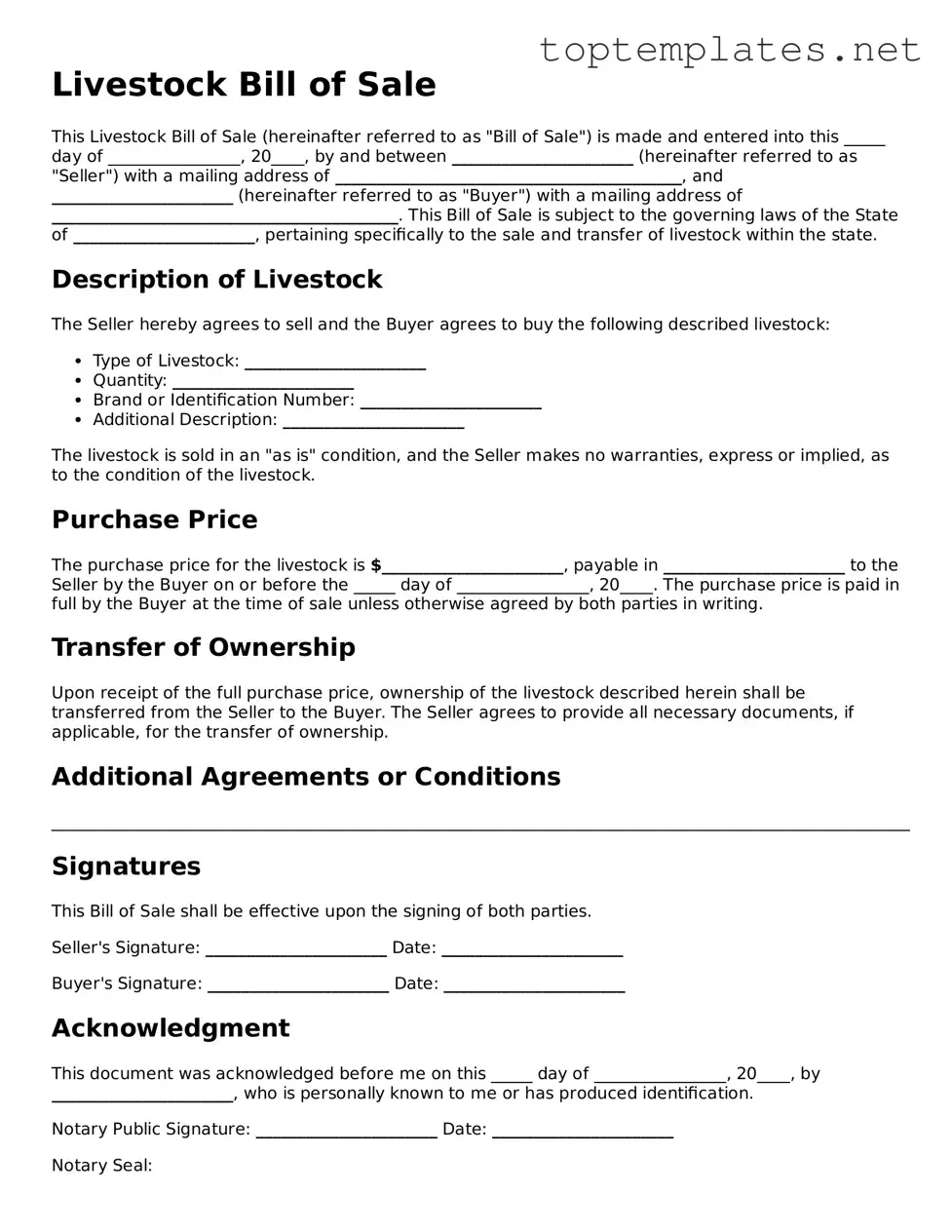Livestock Bill of Sale
This Livestock Bill of Sale (hereinafter referred to as "Bill of Sale") is made and entered into this _____ day of ________________, 20____, by and between ______________________ (hereinafter referred to as "Seller") with a mailing address of __________________________________________, and ______________________ (hereinafter referred to as "Buyer") with a mailing address of __________________________________________. This Bill of Sale is subject to the governing laws of the State of ______________________, pertaining specifically to the sale and transfer of livestock within the state.
Description of Livestock
The Seller hereby agrees to sell and the Buyer agrees to buy the following described livestock:
- Type of Livestock: ______________________
- Quantity: ______________________
- Brand or Identification Number: ______________________
- Additional Description: ______________________
The livestock is sold in an "as is" condition, and the Seller makes no warranties, express or implied, as to the condition of the livestock.
Purchase Price
The purchase price for the livestock is $______________________, payable in ______________________ to the Seller by the Buyer on or before the _____ day of ________________, 20____. The purchase price is paid in full by the Buyer at the time of sale unless otherwise agreed by both parties in writing.
Transfer of Ownership
Upon receipt of the full purchase price, ownership of the livestock described herein shall be transferred from the Seller to the Buyer. The Seller agrees to provide all necessary documents, if applicable, for the transfer of ownership.
Additional Agreements or Conditions
________________________________________________________________________________________________________
Signatures
This Bill of Sale shall be effective upon the signing of both parties.
Seller's Signature: ______________________ Date: ______________________
Buyer's Signature: ______________________ Date: ______________________
Acknowledgment
This document was acknowledged before me on this _____ day of ________________, 20____, by ______________________, who is personally known to me or has produced identification.
Notary Public Signature: ______________________ Date: ______________________
Notary Seal:
